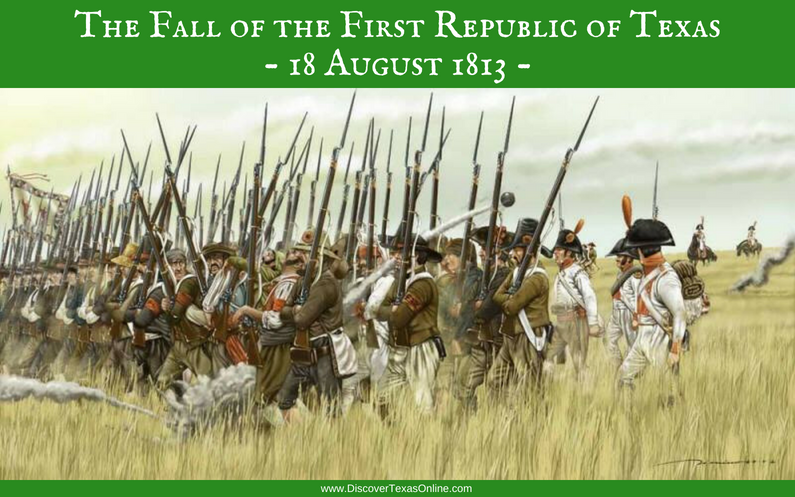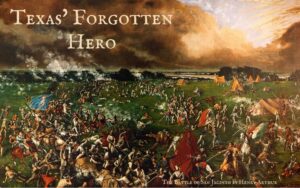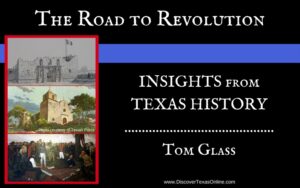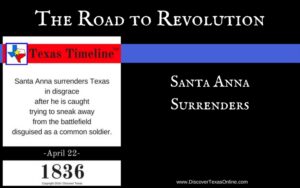
For over 60 years, Paul Harvey delighted Americans with broadcasts he called “The Rest of the Story.” In short segments, he’d tell a captivating tale from history, saving the most interesting details for last. Then he’d let his audience in on the secret and end with his trademark line: “…and now you know the REST of the story!” Listeners ate it up. 🙂
As teachers, we can learn from Paul Harvey’s example. Stand by, and I’ll give you an example by telling YOU “the rest of the story”…
Recently, I wrote about the Battle of Medina and the Fall of the First Republic of Texas. If this was the first time you heard or read about the Battle of Medina, you might vaguely remember that it took place before the Alamo, but you probably don’t remember much more (unless this was the first time you realized that Texas was a republic more than once).
If it’s hard for adults to remember historical events, we can be sure our children won’t remember much either. Without context it’s hard to understand how the story fits together or why it matters.
So here’s the rest of the story:
- Texas was a Republic for a little over four months from April 6-August 13, 1813–about 23 years before our more famous revolution in 1836.
- An army of 1400 Texas Republican Army, exhausted from marching through sandy soil, were lured into an ambush by 1830 Spanish Loyalists. All but 100 Texians were killed in the 4-hour battle, making this the bloodiest battle in Texas history.
- The bodies of the dead Texans were ordered to be left to rot, unburied.
- The Spanish General, Joaquín de Arredondo, pursued the Texian survivors as they fled 20 miles back to San Antonio.
- When the Spanish army reached San Antonio, they dragged 327 men of the town out into the streets, accused them of being rebels, and murdered them on the spot.
- The Spanish army then abused their widows and dragged them off to prison, leaving hundreds of traumatized orphan children to wander in the streets.
- Fighting with General Arredondo that day was a 19-year-old Lieutenant, Antonio López de Santa Anna. Perhaps this was the day he learned to punish rebellion with cruelty–a tactic he employed again in 1836 when he made himself Dictator and General of the Mexican Army, lashing out against Texans at the Alamo, Goliad, and San Jacinto.
- One of the Texians who survived that day was 18-year-old José Antonio Navarro. He never forgot the violent injustice he’d seen and devoted the rest of his life to fighting for Texas independence as a revolutionary and a statesman. His home still stands in San Antonio.
- The population of Texas was small back in 1813. The 1727 Texians killed that day represented 1/3 of the population of the entire state–half of all adult males! (For comparison, the population of Texas in 2017 was 28.3 million. Imagine if over 9 million Texas men were slaughtered in a single day!)
- Because so many of the Texas settlers were killed at Medina, Mexico needed to attract more pioneer families to secure their land north of the Rio Grande. They opened immigration from the United States, granting Moses Austin permission to bring in 300 Anglo families. General Arredondo was the last official to sign the papers that authorized Moses Austin as an empresario.
- Today in downtown San Antonio two main streets are named Dolorosa and Soledad. Dolorosa is a Spanish word meaning “grief” or “sorrow”. Soledad means “desolation” or “loneliness”. These streets were named to commemorate the hundreds of orphans who roamed them, desperately trying to survive.
Knowing the rest of the story makes a difference!
When you read or teach history, try to picture yourself living through the experiences you’re reading about. Take time to think about how it might have felt to witness the events–how they might change you. Look at what came before and what came after to “connect the dots” and understand the consequences.
History is more meaningful and more memorable when you know “the rest of the story.”



